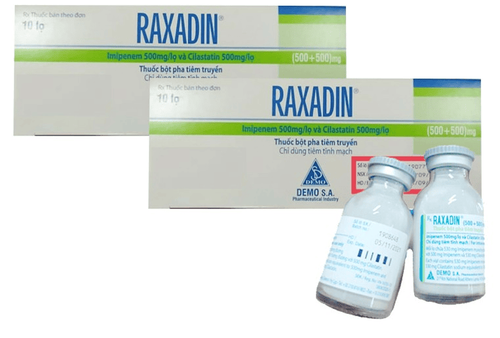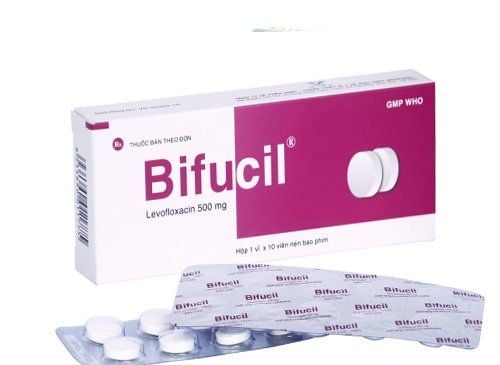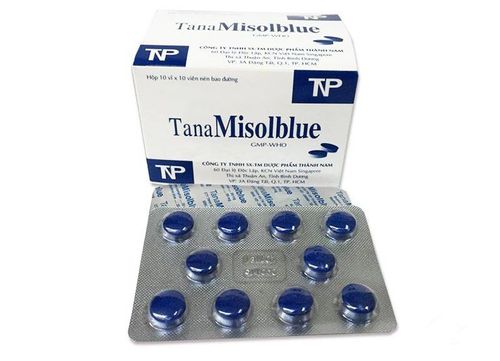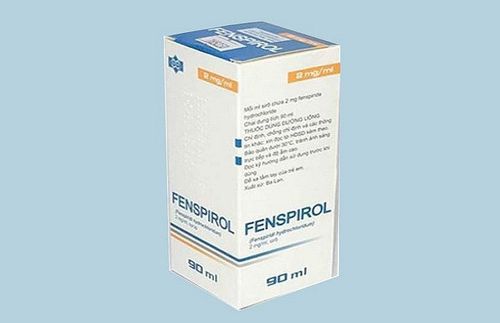This is an automatically translated article.
Orafort 200 has the main ingredient Ofloxacin, used in the treatment of pyelonephritis, prostatitis, cystitis, surgical infections, urinary tract infections, respiratory tract infections and gonorrhea. ... Let's learn more about Orafort 200 drug line through the following article.1. What is Orafort?
Orafort belongs to the group of drugs that treat parasites, anti-infectives, antivirals and antifungals. Orafort is prepared in the form of film-coated tablets, packed in boxes of 3 blisters, 10 blisters x 10 film-coated tablets.
Orafort medicine has the main ingredient Ofloxacin 200mg and other excipients such as: Lactose, Microcrystalline cellulose 101, Copovidone, Sodium starch glycolate, Colloidal anhydrous silica, Magnesium stearate, Opadry II white, purified water just enough 1 tablet .
2. Indications for taking Orafort
Orafort 200 is used in the following cases:
Adult patients with urogenital tract infections: pyelonephritis, prostatitis, epididymitis, uncomplicated cystitis, surgical infections , complicated urinary tract infections Treatment of respiratory tract infections: Pneumonia, severe bacterial bronchitis, lung abscess, bronchiectasis, otitis media, sinusitis, tonsillitis. Treatment of infections: Blood, bones, joints, eyes, bile and prostate gland, uncomplicated skin and soft tissue, obstetrics and gynecology. Uncomplicated acute gonococcal infection of the urethra and cervix.
3. Dosage and how to use Orafort
The usual dose is 1-2 Orafort tablets, taken every 12 hours. This dose varies depending on the type of infection and symptoms. Severe bronchitis or pneumonia: 2 Orafort tablets every 12 hours for 10 days. Uncomplicated gonorrhea: Take a single dose of 2 Orafort tablets. Uncomplicated skin and soft tissue infections: 2 Orafort tablets orally every 12 hours for 10 days. E. coli and K. pneumoniae cystitis: 1 Orafort tablet every 12 hours for 3 days. Cystitis caused by other bacteria: 1 Orafort tablet orally every 12 hours for 7 days. Complicated urinary tract infections: 1 Orafort tablet every 12 hours for 10 days. Prostatitis: 1.5 Orafort tablets orally every 12 hours for 6 weeks. Special Orafort dosing instructions:
For patients with impaired renal function: The dose of Orafort should be adjusted in patients with impaired renal function, as increased blood levels may occur due to decreased serum levels. excreted in the kidney. In general, the dose of Orafort should be adjusted according to the creatinine clearance (Clcr) as follows: Creatinine (Clcr) > 50ml/min: No dose adjustment of Orafort is necessary. Creatinine (Clcr) 10 - 50 ml/min: Orafort dose unchanged, every 24 hours. Creatinine (Clcr) < 10 mU/min: 1⁄2 usual dose of Orafort, every 24 hours. Orafort does not separate dialysis.
Children up to 18 years: Orafort is not recommended. Liver disease: The safety of Ofloxacin in patients with impaired liver function is unknown. However, preclinical data suggest that the excretion of ofloxacin may be slow and the dose of ofloxacin should be adjusted to prevent an increase in blood concentrations. In patients with severe hepatic impairment, the maximum dose of ofloxacin should not exceed 400 mg of ofloxacin per day.
4. Contraindications to taking Orafort
Orafort is not used in the following cases:
Patients with hypersensitivity to Ofloxacin or Quinolone or any of the excipients in the drug formula. Children, pubertal children under 18 years of age, adolescents in the growth period. Pregnancy and breast-feeding as there is no information on the safety of Orafort in this patient population.
5. Orafort drug interactions
Do not combine Orafort with:
Antacids such as: Warfarin and Theophylline. Diabetes medication. Orafort when used with antacids containing Calcium, Magnesium, or Aluminum with Sucralfate, Bivalent or trivalent cations such as Iron, multivitamins containing Zinc showed a significant reduction in bioavailability. If co-administration is necessary, use Ofloxacin and antacids about 2 hours apart. Concomitant use of Ofloxacin with non-steroidal anti-inflammatory drugs increases the risk of central nervous system irritation and convulsive seizures. To avoid interactions, before being prescribed Orafort 200, the patient should inform the doctor about the drugs they are using, including functional foods. The doctor will base it on that to prescribe the appropriate Orafort 200.
6. Side effects when using Orafort for treatment
During the use of Orafort, patients may experience some unwanted side effects such as:
Common:
Gastrointestinal disorders: Nausea/vomiting, diarrhea, abdominal pain, loss of appetite. Nervous: Dizziness, headache, fatigue, tremor, nightmares, insomnia and visual disturbances. Skin reactions: Skin itching, rash, skin reactions such as hypersensitivity. Rare:
Neurological: Depression, hallucinations, psychotic reactions, convulsions. Skin: Stevens-Johnson syndrome, vasculitis and toxic necrosis of the skin. Diarrhea, vomiting. Fatigue, rash and dizziness. If you experience these symptoms, the patient should stop using Orafort 200 and notify the doctor for appropriate treatment.
7. Precautions when using Orafort
Use Orafort with caution in patients with a history of central nervous system disorders, epilepsy, cerebral atherosclerosis. Avoid sunlight during treatment with Orafort. Orafort should not be used by pregnant women or children. In several studies in several juvenile animal species, the use of ofloxacin caused weight-related cartilage damage. There is evidence of recovery of joint damage after discontinuation of Ofloxacin doses. Diarrhea, especially severe and persistent during Orafort treatment or the first weeks after treatment with various antibiotics, especially broad-spectrum antibiotics, may be symptomatic. caused by Clostridium difficile. The severity is pseudomembranous colitis, which can be confirmed by endoscopy or tissue studies. Stool smear and cytotoxicity are the best ways to diagnose Clostridium difficile disease. Side effects when using Orafort can be stagnation of stools. If the diagnosis of pseudomembranous colitis is suspected, Orafort should be discontinued immediately and appropriate antibiotic therapy (such as vancomycin or metronidazole) instituted. Tendonitis or tendon rupture is rare, especially in the elderly. In the presence of signs of tendinitis, treatment with Ofloxacin should be discontinued, the A-sinusoidal tendon inactivated by appropriate immobilization or special heel piece, and orthopedic surgery. Orafort can cause severe myasthenia gravis. Ofloxacin may cause porphyria in patients at risk. Ofloxacin can induce (-) isolation of Mycobacterium tuberculosis, giving false positive (-) results in bacteriological diagnosis of tuberculosis. Ofloxacin should be used with caution in patients with renal or hepatic impairment. In patients with known or suspected renal insufficiency, including the elderly, with decreased creatinine clearance, clinical observation should be made and appropriate laboratory studies should be performed first. and during Ofloxacin treatment, as the elimination of Ofloxacin may be reduced. Increased serum concentrations may occur unless the dose of Ofloxacin is adjusted for renal clearance. Above is all information about Orafort 200, patients need to carefully read the instructions for use, consult a doctor / pharmacist before using. Note, Orafort 200 is a prescription drug, patients need to use the drug as prescribed by the doctor, absolutely do not self-treat at home.













